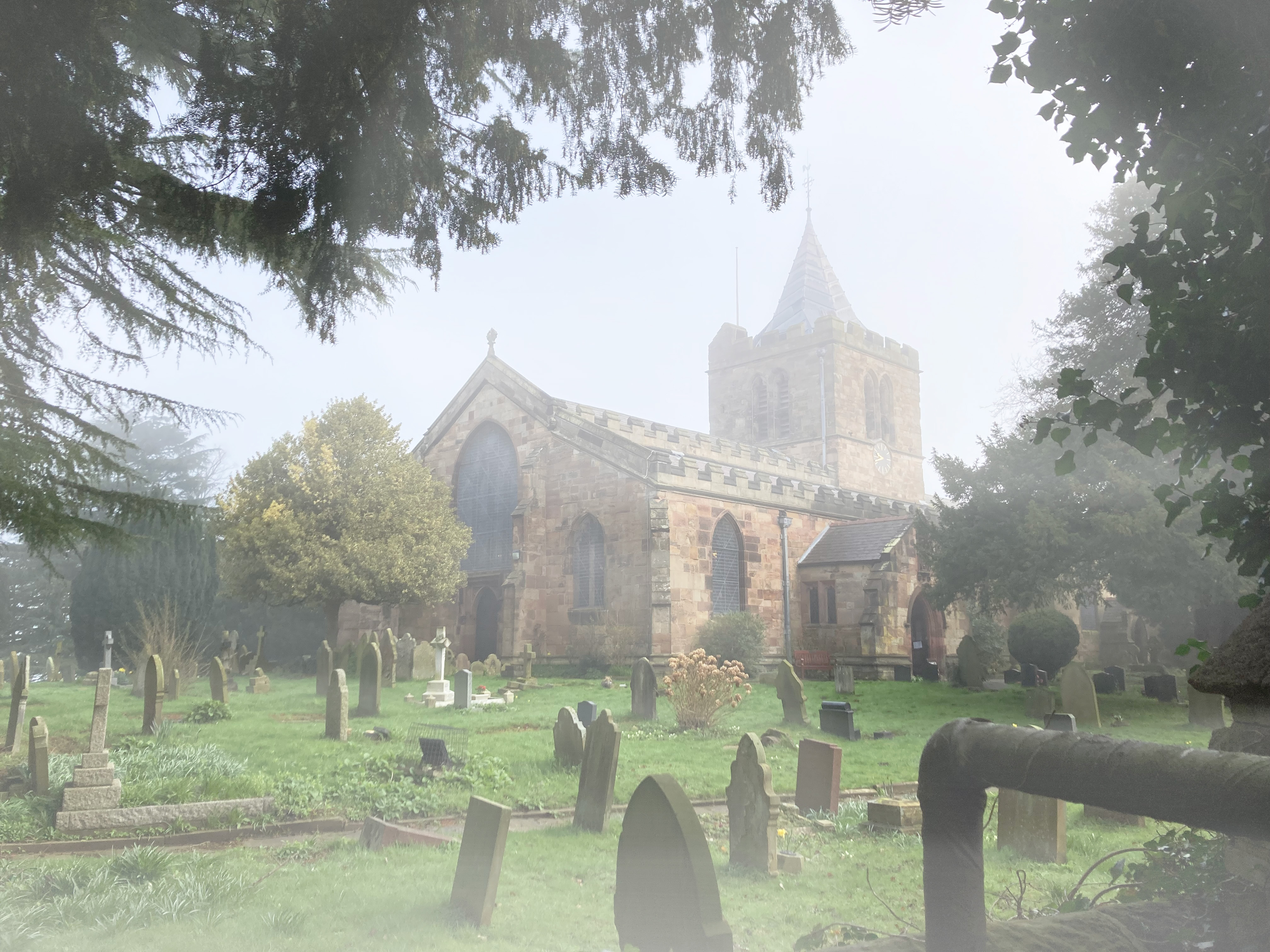Meet the Neighbours
by Sarah Smith, author of Hear no Evil and Writer in Residence at Gladstone's Library in 2024
I arrive at Gladstone’s Library on a drizzly summer’s evening. Just in time for bell-ringing practice at the church next door. The first photograph I take is the view from my bedroom window. I’m thrilled to be looking out at St Deiniol’s and its surrounding churchyard.
When I visit a new place, I often gravitate towards the local churchyard. It helps me get my bearings, and it’s an obvious choice for someone who writes historical fiction. All the memorials inscribed with dates and places and the graves of people who lived and died here. It’s a good place to start to understand the history of a place.
These unfamiliar names, of people and local places, help me to get to grips with the rhythms of speech that I hear as I meet the staff in the library and in the nearby shops, and on walks I take to explore the area. Would the stonemasons, who carved the Christian names of Henrietta, Isaac, Caradoc, and Lavinia a century or two ago, be surprised to hear a writer from Glasgow intonating them in 2024? Maybe not, maybe they understood the longevity of the messages they were sending.
The groups of memorials that share common family names - Blanthorn, Haspray, Jellicoe, Kippax, Shallcroft - tell me about the kind of people who lived and died here, the jobs they did, and the social status that likely defined their lives. As well as the wealthy Gladstone and Glynne families, these people provided the layers on which Hawarden and the surrounding area were built. As did the people who didn’t have money and for whom no memorials exist; they’re still here, part of the earth under my feet.
Although the churchyard is a peaceful place for contemplation, I discover from my vantage point on the Southeast corner of Gladstone’s that it’s often fairly busy too. There are at least six pathways leading into St Deiniol’s from the roads and pathways of Hawarden. Dog-walkers pass through it on their morning and evening walks. It’s a good way of avoiding the main street on the way from the library to the shop, pub, or bus stop.
It’s also home to other residents. Although they do a good job of hiding in the many trees and bushes, my phone app identifies greenfinches, goldcrests, and chiffchaffs as well as the blue tits, blackbirds, treecreepers, and robins that I spot myself. I get to know a tabby cat with a loud meow who hangs around and alleviates my yearning for my own cat and dog back home.
The churchyard has become my temporary back garden. The place I see when I open my blinds in the morning and close them at night. During my month-long residency, the days are efficiently broken up as the church bells mark each quarter hour. I look at the clock on my phone less, secure in the knowledge that the bells of St Deiniol’s will keep me right.

